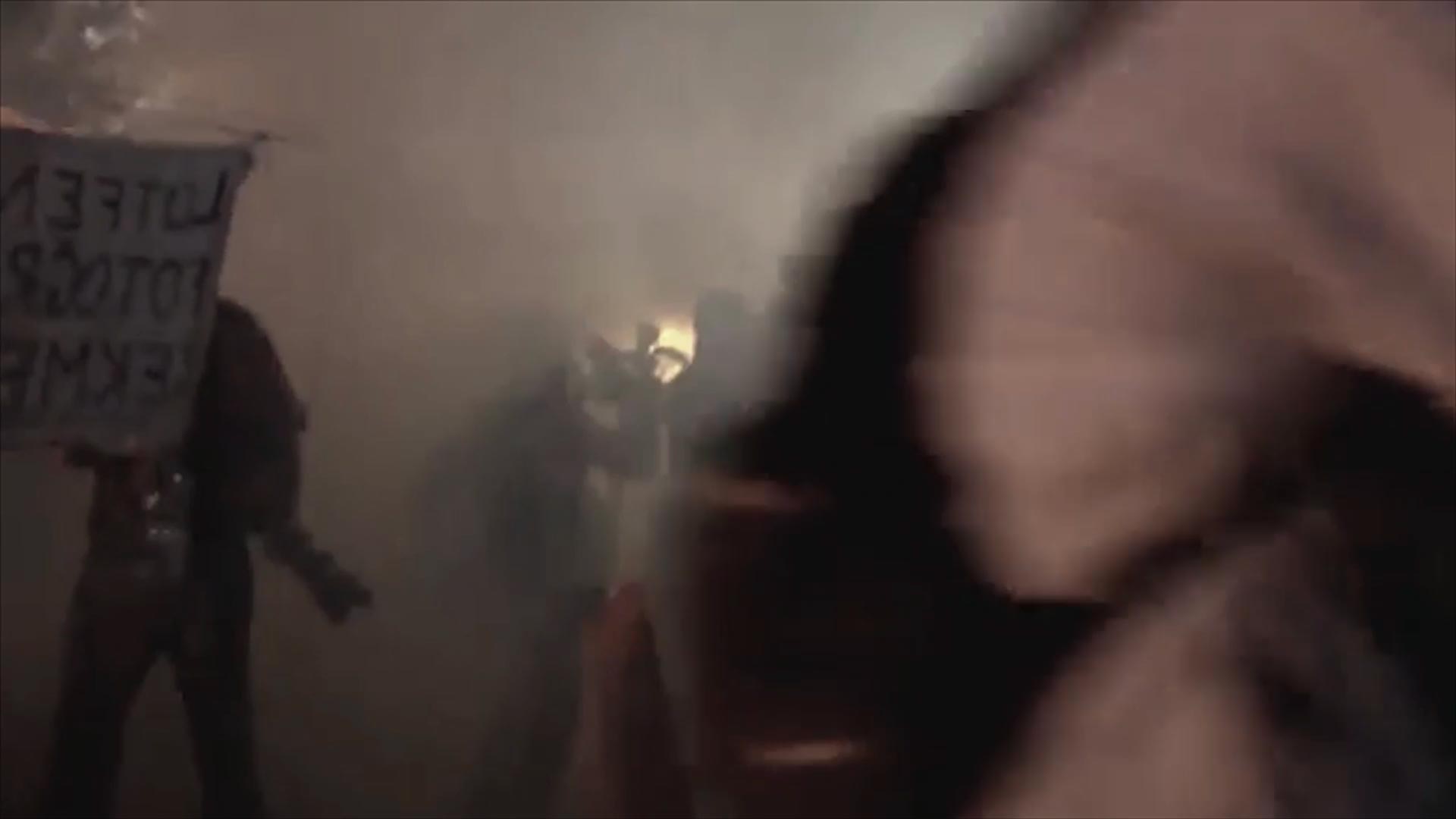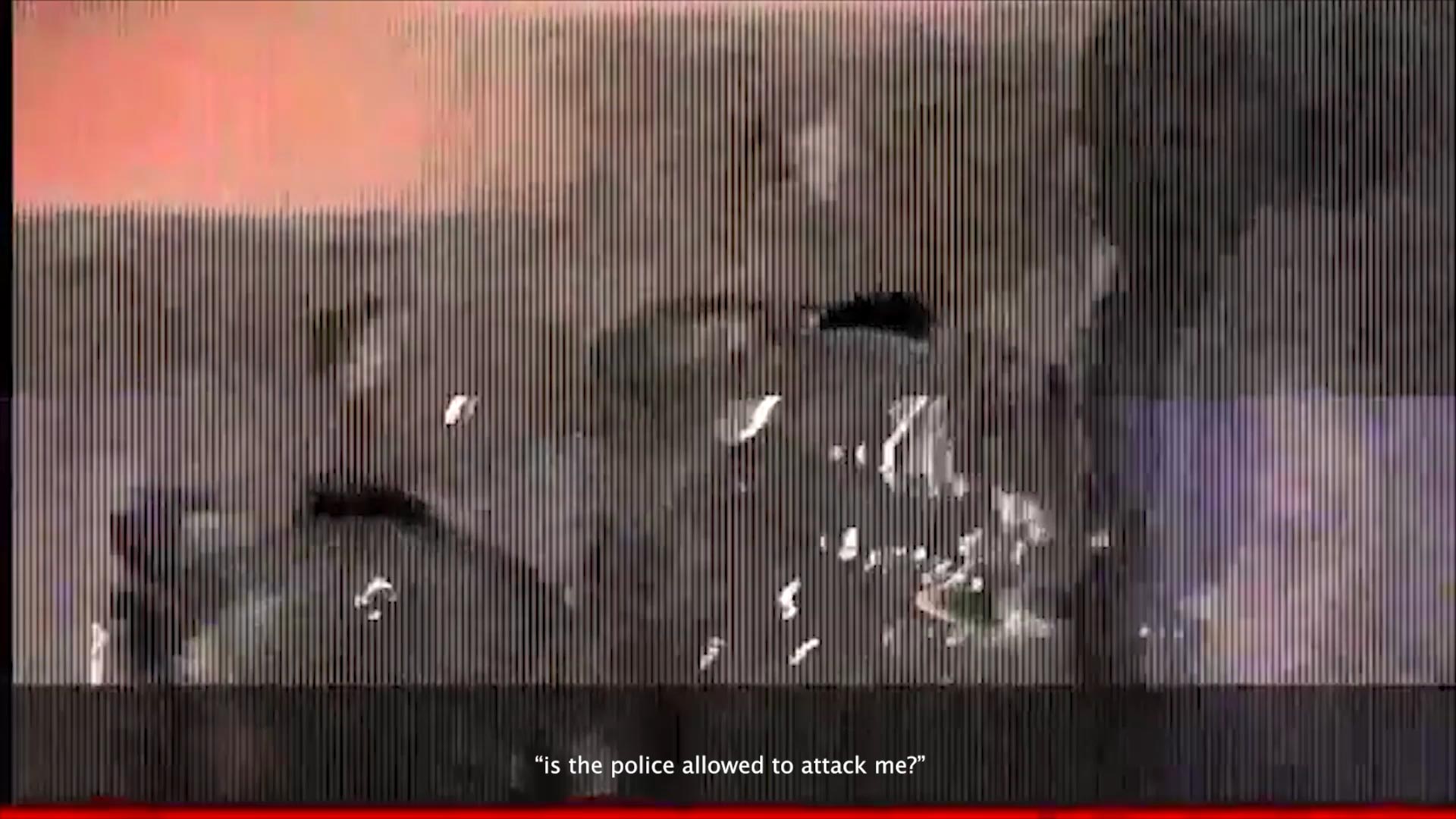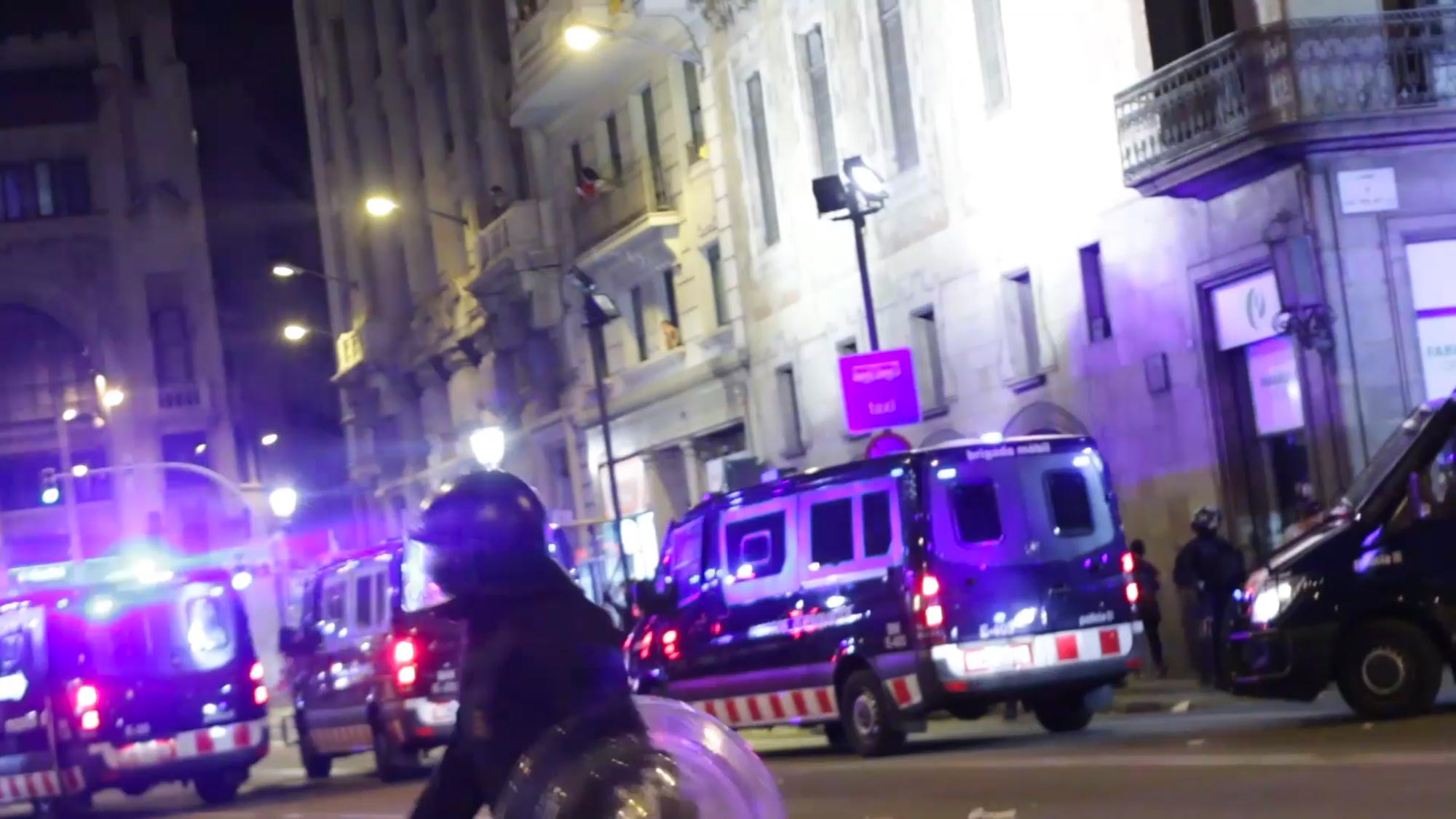Green, how I want you green.
Green wind. Green branches.
The ship out on the sea
and the horse on the mountain.
–Federico García Lorca
This series of films departs from a conversation on landscape in the poetry of Federico Garcia Lorca and Mahmoud Darwish. It posits landscape as a place of connection as well as a reflection on memory, distance, and exile. The figure of the olive tree connects a wide Mediterranean region through millennia of parallel agricultural ritual and ecological coexistence. The olive branch is known as a symbol of peace while residing in a region that has been cut apart and divided.
Trees are a living archive of the land. Olive trees can live up to thousands of years, making them a stable and familiar element for generations of their neighbours. The olive branch is a symbol of peace whose stable grip has been wrested from the soil. They are also targets in the ongoing catastrophe in Palestine that is impossible not to speak of.
***
Repeated subtitles flash across the screen saying *hush/speak up* as footage of protest, violence, and state repression create a lurching compilation from various geographies across the Mediterranean. The hush is seen as frozen silences that descend on vacant landscapes interrupted by moments of harsh but collective calls for liberation. Veziroglu finds herself caught behind urban barricades in Gezi Park and Barcelona, where the bodies of protestors clash with the hardened shields and helmets of paramilitary officers and their dispersed noxious clouds of vaporous material. Various scenes from the film show military parades and bombarded civilian houses in Kurdish towns under siege by the Turkish military. There are also scenes from Veziroglu’s home in Cyprus, where the nationalism and militarisation of both sides have divided the island. The northern part has been occupied by the Turkish military since the 1970’s while the entire island has been controversially accepted as a part of the European Union since 2004, further deepening the division.
The film sparks an uneasy tension between silence and direct action. While the camera gazes into landscapes garnering a needed rest, the land contains an eerie anticipation for what will be as motion carries the passenger to an unspecified destination. The film’s harsh cuts show the signs of gasping for metaphoric air in landscapes crossed by borders, police fences, and contested state infrastructure. Behind the violence is the marked absence of the protection of self-determination, manipulations of democracy, and the refusal of freedom of speech. Rather than leaving an image of hopelessness, the film traces the fleeting experiences of collective freedom, momentary liberations that slowly crack the behemoth of military power, and that erupt despite unregulated repression.
Rahme Veziroglu is an audiovisual artist, researcher and filmmaker. She has a masters degree in Social Theory at the University of Amsterdam and; Creative Documentary Making at La Casa de Cine in Barcelona. Currently she is a PhD candidate on Observational Cinema through which she explores sensorial aspects of belonging in the Mediterranean as a decolonisation practice. She belongs to the grassroots and has been actively involved with various self-organised spaces and collectives in Cyprus. Her works seek to unearth bridges between micro and macro phenomena, to make sense of the fragility of life within an infinite universe. Along these lines, her focus is on in-between and peripheral areas where limits and potentials coexist, both politically and philosophically. Her works have been exhibited and screened all across Cyprus as well as Barcelona, Murcia, Utrecht, Istanbul, Athens and Prague.
Àngels Miralda (1990) is an independent writer and curator. Her recent exhibitions have taken place at Something Else III (Cairo Biennale); Garage Art Space (Nicosia); Radius CCA (Delft), P////AKT (Amsterdam), Tallinn Art Hall (Estonia), MGLC – International Centre for Graphic Arts (Ljubljana), De Appel (Amsterdam), Galerija Miroslav Kraljevic (Municipal Gallery of Zagreb), the Museum of Contemporary Art of Chile (Santiago), Museu de Angra do Heroísmo (Terceira – Azores), and the Latvian Centre for Contemporary Art (Riga). Miralda wrote for Artforum from 2019-2023 and regularly publishes with Terremoto (Mexico City), A*Desk (Barcelona), Arts of the Working Class (Berlin), and is editor-in-chief of Collecteurs (New York).





